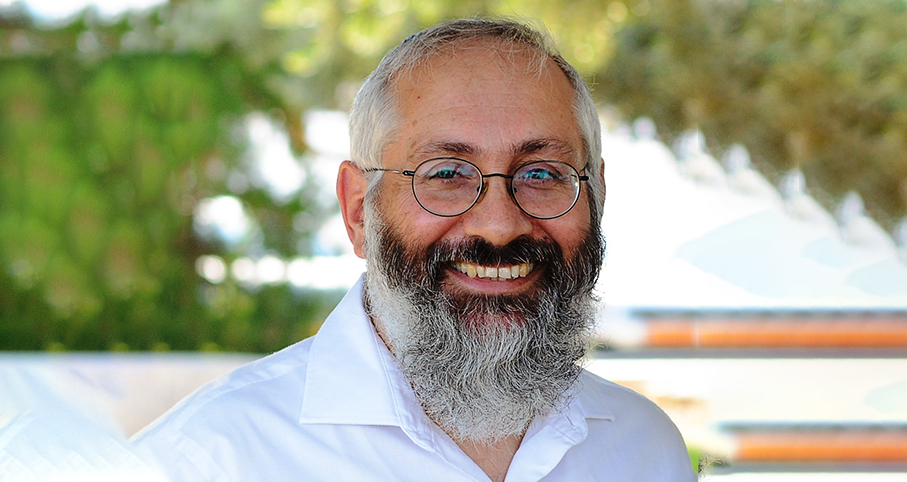Beit Midrash
- Shabbat and Holidays
- Shavuot
- Articles about Shavuot
- Family and Society
- Kashrut
- The Laws of Kashrut
Driving on a secondary route after visiting an ice cream plant, I noticed a small cheese factory. At the time, I had no experience in the practical kashrus arrangements regarding the manufacture of cheese and whey in modern factories, but I was familiar with the topics as they are discussed in the Gemara, rishonim and poskim.
Being by nature a curious person, and also, perhaps more significantly, having a few hours to spare, I decided to drop in on the factory, hoping that perhaps I would be offered a tour of the production. I figured that if I didn’t ask, I would certainly not get a tour, and if I did get a tour, perhaps I would learn how cheese and whey are manufactured, and what needs to be done to make the products properly kosher.
Hashem made cow's milk contain all the nutrients necessary for a newborn calf to grow big and strong until it is ready to be self-supporting by eating grass for its nutrition. The major components of milk are lactose, or milk sugar, which provides the carbohydrates a young calf needs; casein and other proteins; cream (the fat component); vitamins and minerals, including calcium for healthy bones; and about 90% water, which keeps the other ingredients in suspension. Manufacturing cheese requires precipitating (separating) the casein out of the milk and then coagulating it. These processes may involve use of a “starter” and “rennet.” The coagulated part of the milk, called the curd, separates from the rest, which is the whey. The curd is pressed into a solid block – the shape of the cheese.
The Gemara records many reasons why Chazal prohibited using cheese when a Jew did not participate in its manufacture or did not own its raw materials. In practice, having a Jew participate in the manufacture of cheese is usually accomplished by having a mashgiach add the starter and the rennet into the milk batch. Such cheese is called gevinas Yisroel (literally, cheese of a Jew), whereas gevinas akum (literally, cheese of a non-Jew) is the name for the type of cheese that Chazal prohibited. (Whether we resolve the prohibition of gevinas akum by having a Jew participate in the production, or by having him own the product, is a lengthy topic discussed in a different article available on RabbiKaganoff.com.)
I pulled into the driveway of the cheese factory and saw a billboard attached to the sidewall of the factory, advertising the retail products that the company manufactured – cheddar cheese, Swiss cheese, mozzarella cheese and a few similar varieties. As I would soon find out, the company also did some private-label selling, which they did not advertise on a billboard, and also sold some industrial products, specifically, various forms of whey.
I no longer remember whether I had noticed that the labels of the products on the billboard had a large letter K on the package. Of course, we all know that this is not a registered kashrus symbol. However, there is a segment of the population, rapidly disappearing, of traditionally observant Jews who assume that a large K on a product means that it is kosher.
I was pleasantly surprised when the receptionist quickly ushered me into the office of the plant manager, who was also the company owner. I told him that I was interested in knowing the details of cheese production and happened to drive past his factory this day. I expected him to brush me off, telling me that he did not want to reveal any of his trade secrets. I was quite surprised that he was willing to walk me through the plant. Perhaps I looked very honest; perhaps he had no trade secrets to hide; perhaps small-town people are less suspicious; perhaps his pride in his business got the best of him. I just know that he was very willing to spend a considerable amount of time showing me around his facility, explaining all the details of production and answering all my questions, eagerly and fully.
I actually did get a very good education that day on how “hard cheese” is made. Subsequently, I also learned some side curiosities: for example, that true Italian mozzarella cheese is not made from cow’s milk, but from the milk of a water buffalo. (For the kosher consumer, it is good that you can make mozzarella from cow’s milk, because I have never seen anyone in the United States milk a water buffalo, although it is a kosher animal. It is commonly milked today in Italy, and I know that this could be arranged in Israel. Nevertheless, I am unaware of anyone who sells cholov Yisroel buffalo milk.)
My visit over, I thanked the plant manager for his wonderful tour, still curious why he had received me so nicely, and attributing it to my charisma. But then, I found out that he had an ulterior motive.
“You must be a rabbi,” he said. I guess my beard didn’t look too Amish. “I am in need of a new certifying rabbi. Could you help me?”
He then produced a letter from a nursing home in Brooklyn. The letter verified that the cheese produced by his factory was kosher. I assumed that the nursing home had a certifying rabbi, who also certified cheese factories and other facilities, although I saw no indication that any of the rules necessary to avoid the prohibition of gevinas akum were observed. This would usually require the presence of an on-site frum individual who added the ingredients that make the cheese form. Another option, rarely used, also existed: That the rabbi had arranged that he was a partial owner of the products being manufactured.
Could you be our new rabbi?
The owner/plant manager explained. “Rabbi Levine* certified our plant for many years. His fee was much lower than any other quoted to us. He used to visit the factory once a year, ask a few questions and collect his check. A few years ago, his wife died and, shortly thereafter, he moved into an assisted living facility. He still used to visit once a year, although it was quite obvious that he was getting on in years. The last two years, he contacted us, and we mailed him his annual fee. But our certification is now running out, and we have been trying to reach him, unsuccessfully. We do not even know if he is still alive! Could you be our new rabbi?”
Much as I would have liked to be makir tov to the factory owner for educating me about the production of kosher cheese, he was not interested in making the changes necessary for his cheese to be kosher according to any standard. I never met Rabbi Levine, but he was clearly out of his league in issuing a hechsher. I am unaware of any accepted heter that would allow this cheese to be considered kosher on the basis of its ingredients with no Jewish involvement in the production.
Permitted non-Jewish cheese?
In the times of the rishonim, there were areas of Europe, particularly in Italy and parts of France, with a long-established practice to be lenient regarding the consumption of the local cheese of non-Jews. Several rishonim quote this lenient position in the name of the Ge’onei Narvona. The lenience was based on the fact that the Jews knew the ingredients used by the gentile cheesemakers, and knew that none of the concerns mentioned by the Gemara was germane. The cheese was set with "flowers," some variety of plant-based enzymes. I am told that, to this day, there are cheeses in some parts of Europe that use an enzyme found naturally in a variety of thistle. Perhaps this was the type of cheese that these communities used.
However, most rishonim rejected this reasoning, contending that the prohibition against non-Jewish cheese exists even when none of the original reasons applies. They contend that the prohibition has a halachic status of davar she’be’minyon, a rabbinic injunction that remains binding even when the reason the takanah was introduced no longer applies, until and unless a larger and more authoritative body declares the original injunction invalid. Since a more authoritative beis din never rescinded the prohibition on non-Jewish cheese, it remains – even when none of the reasons apply (Rambam, Ma’achalos Asuros 3:4; Rashba, Toras Habayis page 90b; Semag, Mitzvah 223; Tur, Yoreh Deah 115).
The Shulchan Aruch rules according to the majority opinion that there is no halachic basis for those communities that permitted use of the local non-Jewish cheese. The Rema follows a more lenient view, permitting use of non-Jewish cheese in a place where one can ascertain that there was a long-established custom to permit it. Therefore, no one in today’s world would be permitted to use non-Jewish cheese, with the possible exception of an Italian community that can prove a tradition dating back at least eight hundred years.
Gevinas Yisroel by observation
The Rema contends that a Jew observing the production of cheese makes the cheese gevinas Yisroel, which is, by definition, not subject to the prohibition of gevinas akum. In his opinion, this is true even when the milk and curdling agents are all owned by a non-Jew, and even when non-Jews performed all the steps in the cheese production.
The Shach, however, takes tremendous issue with this approach of the Rema, contending that if a non-Jew owns the milk, the acid, and the enzyme, and he places the acid or enzyme into the milk, the resultant cheese is prohibited as gevinas akum, even if an observant Jew supervised the entire production.
Gevinas Yisroel by ownership
According to some contemporary poskim, there are ways to make cheese kosher by making a Jew the owner of the product. If one follows this opinion, you could create some complicated kinyanim and, thereby, make the cheese gevinas Yisroel, fully kosher.
The Noda Biyehudah (Shu’t Noda Biyehudah II Orach Chayim #37) discusses a case where a Jew is "renting the schvag" of a non-Jew for the purpose of producing cheese. I do not know the meaning of the word schvag, and the many people I have asked do not know either (although some of them insisted otherwise). From the context in which the Noda Biyehudah uses the term, it seems that this was a Slavic word for a cheese factory. The case is that the Jew is contracting with the non-Jew to make cheese for the Jew in the gentile’s facility.
The Noda Biyehudah contends that when the Jew intends to purchase the cheese and also supplies the rennet, the Jew is already considered the owner of the cheese. Under these circumstances, there is no problem of gevinas akum, even according to the Shach. The Noda Biyehudah concludes that, under these circumstances, a non-Jew may produce the cheese without it becoming prohibited.
Another possibility, suggested by my good friend Rav Sander Goldberg, is that the word schvag was misspelled in the printed editions of the Noda Biyehudah, but refers to Schwab or Swabia, the hilly southwestern region of Germany that borders Switzerland, which was well known for its production of dairy products. Several early authorities, including Sha'arei Dura (#78) and the Maharil (#35), make reference to the heter of the שוואבין to allow non-Jewish butter. When the Noda Biyehudah refers to the שוכרים ,השוואגין he may be referring to Jews from the region of Swabia who would peddle cheeses; they would bring their own rennet, made from the stomach of a kosher slaughtered calf (keivah), to make the cheese. The Noda Biyehudah’s point is that even though the transaction between the non-Jews (who owned the cows) and the Jews (who brought the keivah) wasn't finalized until after the cheese was made, and therefore technically the cheese still was owned by a non-Jew, nevertheless this is considered enough of a partnership to avoid the problem of gevinas akum.
Based on the Noda Biyehudah, the Orthodox Union (OU) once entertained the possibility of considering cheese as gevinas Yisroel on the basis that the mashgiach would own the rennet. However, they reached the following conclusion: "Not everyone agrees to the idea of the Jew owning the rennet. Rav Belsky feels that the type of scenario in which this is or would be done [having the mashgiach do a kinyan on the rennet] is not proper, as, in order for this to work, the cheese must be made for the Jew, rather than him technically having a kinyan in the rennet, with sale of the cheese to others. He [Rav Belsky] says that this is what the Noda Biyehudah meant: The Noda Biyehudah is discussing a case where the Jews rented the cheese plant, (which is how he understood the word schvag) and plan on buying the finished cheeses. In that case, the Noda Biyehudah says that the cheese is permitted. So he’s only saying that owning the rennet suffices where that gives the Jew a partial ownership in the cheese, as a first step towards taking full possession. As such, the Noda Biyehudah’s approach applies only in cases where the Jew now has a partial ownership and will later have full ownership, and there’s no basis for extending it to cases where the Jew really has no ownership and will eventually have even less.
“Both Rav Belsky and Rav Schachter accepted this argument that the Noda Biyehudah’s approach doesn’t apply in this case.”
In conclusion, we have suggested four possible ways to avoid the prohibition of gevinas akum, although some of these approaches are disputed:
1. A Jew (mashgiach) supervises the entire production of the cheese.
2. A Jew adds the rennet and starter, which causes the manufacture of the cheese.
3. A Jew is a proper partial owner of the milk from which the cheese is made.
4. A Jew supplies the rennet for the manufacture of the cheese and maintains partial ownership over the product.
I understand that, years later, this company did decide to produce properly kosher cheeses. I am glad.
* Name is changed.
Spiritual and Material Joy: A Shavuot Primer
Rabbi Eliezer Melamed | Sivan 3 5775

Seeing Sound
Rabbi Chanan Morrison | 5770
The Shavuot Festival and Creation
Rabbi Yaakov Cohen | Sivan 5767






















